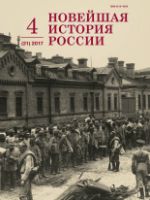Фактор «Дальстроя» и культурная политика на Северо-Востоке СССР в 1953–1960-е годы
“Dalstroy” Factor and Cultural Policy in the North-East of the USSR in 1953– 1960s
Author(s): P. S. GrebenyukSubject(s): Politics, Education, Cultural history, Post-War period (1950 - 1989)
Published by: Издательство Исторического факультета СПбГУ
Keywords: Northeast; USSR; Magadan region; Dalstroy; Cultural Policy; Cultural Management; Ideology; Educational Institutions; Theatre; Literary Activity;
Summary/Abstract: This paper analyzes the characteristics of cultural policy in the North-East of Russia between 1953 and 1960. At its creation in December 1953, the Magadan region was not only part of the transformation that followed Stalin’s death, but was intended to radically change the situation in the North-East of the country. Turning to public policy was to increase the administration’s attention to the socio-cultural sphere. Based on archival materials, the author shows how the Dalstroy legacy determined the specific features of cultural policy. The party leadership tried to win the support of the people, and, against the background of intensive migration, in an effort to overcome the social contradictions and secure the population, cultural policy was aimed at the formation of a new regional identity. By analyzing the documents of the Magadan Regional Party Committee and the Regional Executive Committee and cultural institutions, the author points out that the cornerstone of a new cultural policy in the 1950s became a criticism of Dalstroy traditions and a new ideological line, which marked the year 1953 as the starting point of a new era and pointedly contrasted the new party power to Dalstroy. According to the author, the emergence of cultural phenomenon of the Kolyma ‘gold damping theory’ reflected the protest of Dalstroy’s elite in relation to the collapse of everyday existence. The author notes that the features of cultural policies were associated with the Dalstroy factor until the late 1950s. This ran in contrast to the growth of cultural and educational institutions, the specificity of the territory, as well as administrative problems and contradictions that were identified with the slow formation of the respective instruments of state governance of culture.
Journal: Новейшая история России
- Issue Year: 7/2017
- Issue No: 21
- Page Range: 115-132
- Page Count: 18
- Language: Russian

